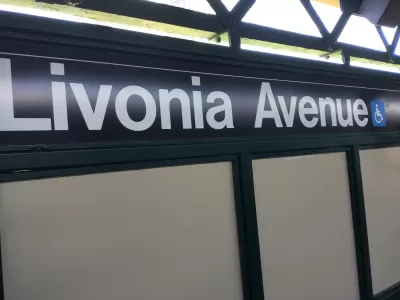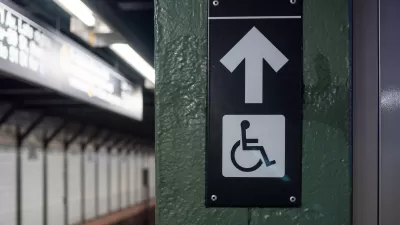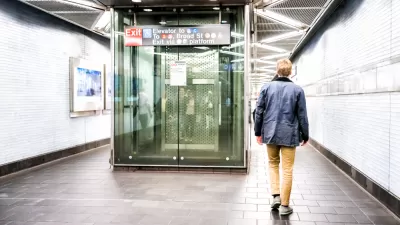The MTA is putting its effort to improve the system’s century-old stations to make them more universally accessible in high gear, adding elevators, boarding upgrades, and mechanical improvements.

A station renovated as part of the New York Metropolitan Transportation Authority’s effort to improve accessibility at its subway stations won a ‘Construction Project of the Year,’ modeling how transit agencies can improve accessibility at older stations.
According to a press release from TAP Electric, a partner on the project team, “The rehabilitation included the installation of two elevators with a street-level elevator machine room; a passageway above the tracks to connect the platforms, new platform windscreens and canopies; new ADA compliant stairs to station platforms and passageways; and station agent booth upgrades. ADA improvements were made to the station’s architectural, structural, and mechanical components, and the control house and platforms were reconfigured to assist in ADA boarding.”
The Livonia Avenue station was built in 1905, and today the L train has a ridership of over 30 million annual riders. “Prior to this vital upgrade, disabled and limited mobility passengers, seniors, and families with young children in strollers could travel to the Wilson Avenue Station in Bushwick – some 2.4 miles away – which was previously the closest ADA-accessible station on the L Line.”
FULL STORY: Brooklyn’s Livonia Avenue Station ADA Modernization Wins Construction Project of the Year

Maui's Vacation Rental Debate Turns Ugly
Verbal attacks, misinformation campaigns and fistfights plague a high-stakes debate to convert thousands of vacation rentals into long-term housing.

Planetizen Federal Action Tracker
A weekly monitor of how Trump’s orders and actions are impacting planners and planning in America.

In Urban Planning, AI Prompting Could be the New Design Thinking
Creativity has long been key to great urban design. What if we see AI as our new creative partner?

King County Supportive Housing Program Offers Hope for Unhoused Residents
The county is taking a ‘Housing First’ approach that prioritizes getting people into housing, then offering wraparound supportive services.

Researchers Use AI to Get Clearer Picture of US Housing
Analysts are using artificial intelligence to supercharge their research by allowing them to comb through data faster. Though these AI tools can be error prone, they save time and housing researchers are optimistic about the future.

Making Shared Micromobility More Inclusive
Cities and shared mobility system operators can do more to include people with disabilities in planning and operations, per a new report.
Urban Design for Planners 1: Software Tools
This six-course series explores essential urban design concepts using open source software and equips planners with the tools they need to participate fully in the urban design process.
Planning for Universal Design
Learn the tools for implementing Universal Design in planning regulations.
planning NEXT
Appalachian Highlands Housing Partners
Mpact (founded as Rail~Volution)
City of Camden Redevelopment Agency
City of Astoria
City of Portland
City of Laramie





























